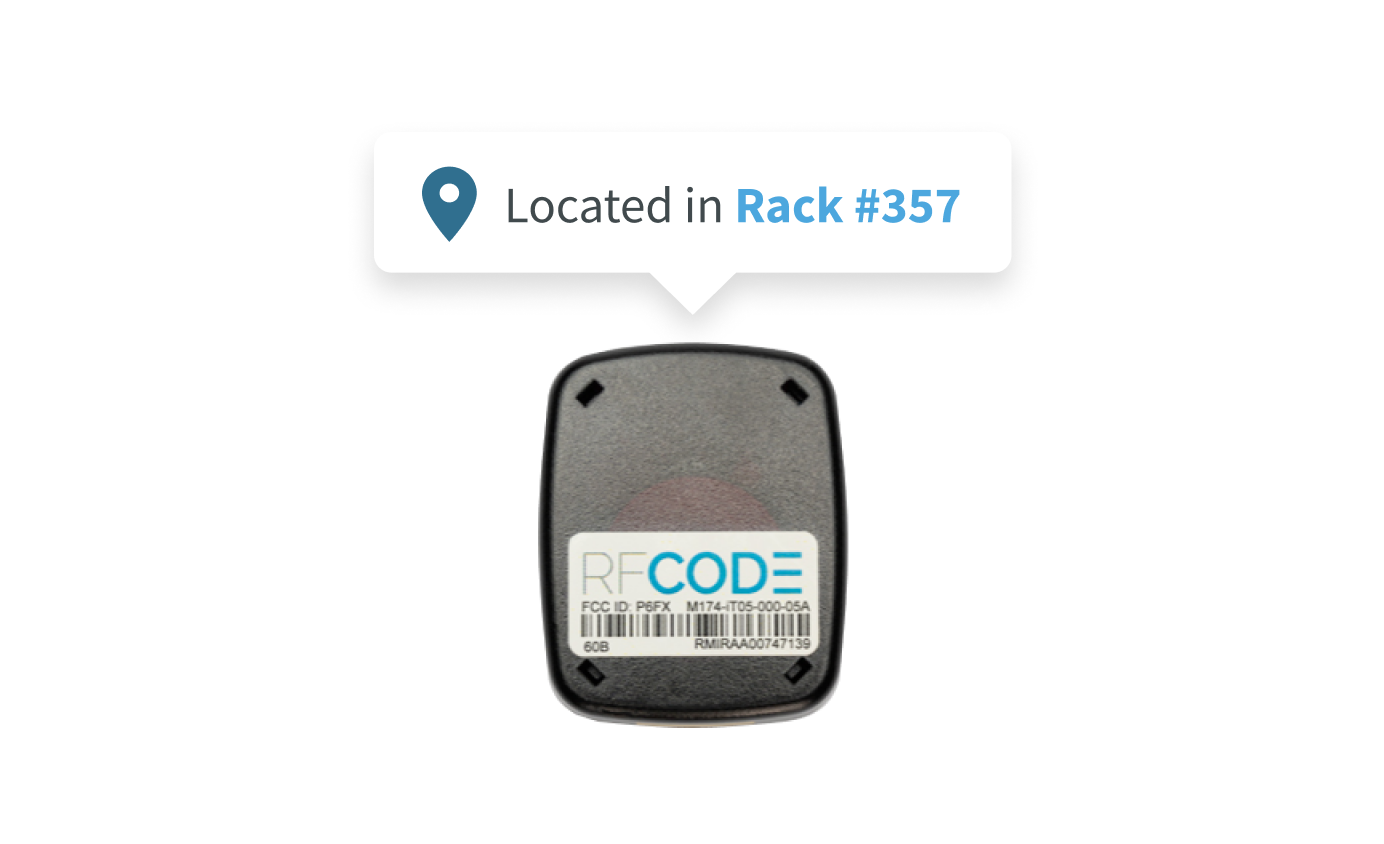Active RFID is a proven solution that is widely trusted and used in data centers around the world. Here are the answers to frequently asked questions about active RFID asset tracking solutions in data centers.
What is active RFID asset tracking used for in data centers?
Active RFID asset tracking is used to optimize hardware asset management process and boost compliance with internal policies and standards and external regulations.
Active RFID asset tracking tags are attached to hardware assets like servers, storage and network devices and they track the location of assets before they are installed in a rack, during their time installed in a rack and after they are removed from a rack.
Active RFID asset tracking is a replacement for manual asset management effort associated with asset record keeping, inventory and audits and is also a replacement for bar code scanning product and passive RFID products.
How does active RFID asset tracking work in a data center?
There are three key components to the solution:
- The Asset Tag – sends a signal for tracking
- The Locator – tells an asset tag where it is
- The Reader – reads asset tag signals
The Asset Tag is attached to and associated with an asset. The Asset Tag stays with that asset for the entire lifecycle, from receipt to disposal.
As the asset moves from the loading dock to storage, to staging, to a rack and then to disposal the location of the asset is recorded from the signal sent by the Asset Tag.
How is active RFID different to passive RFID?
Active RFID actively sends a signal without human intervention and tells you where an asset is, whereas passive RFID requires a human to find the asset then power up the passive RFID tag.
Another way to look at it is that active RFID has an internal power source, and passive RFID requires an external power source, which is usually a handheld scanner.
Diver deeper into the difference here 👉 https://www.rfcode.com/active-rfid-vs-passive
Is active RFID secure?
Yes. Active RFID asset tracking is secure in many ways, including:
- Active RFID asset tracking can’t control, activate or change anything in a data center
- Active RFID uses a one-way signal. The Asset Tags can only send a signal, and the Readers can only receive a signal
- Asset Tags don’t send identifiable data. They send codes that can only be interpreted by the active RFID solution
Can active RFID track what room an asset is in?
Yes. The Locator will tell an Asset Tag what room it is in.
Can active RFID track what rack an asset is in?
Yes. The Locator will tell an Asset Tag what rack it is in.
What manual effort can active RFID asset tracking reduce or replace?
Active RFID asset tracking is commonly used to replace manual asset audit work and manual asset inventory counts.
The way this is achieved is that active RFID asset tracking tags send a signal on a regular interval, for example every 2 minutes, and also sends a signal when it is detected that the location of an asset has changed. The data is captured and stored for easy access and reporting.
So instead of going out to locate and count assets manually active RFID automates continuous real-time inventory and audits that enable any time reporting.
Active RFID can also reduce the amount of manual effort spent to remediate asset inventory issues and compliance issues simply because inventory and audits are happening continuously and the opportunity for error is reduced.
Do you have more questions?
Contact us any time for a no obligation chat about active RFID asset tracking for data centers.



